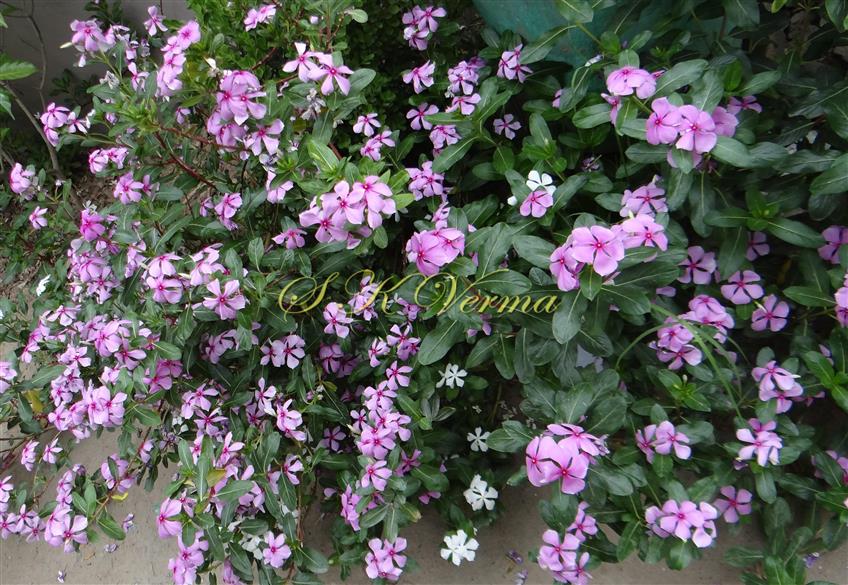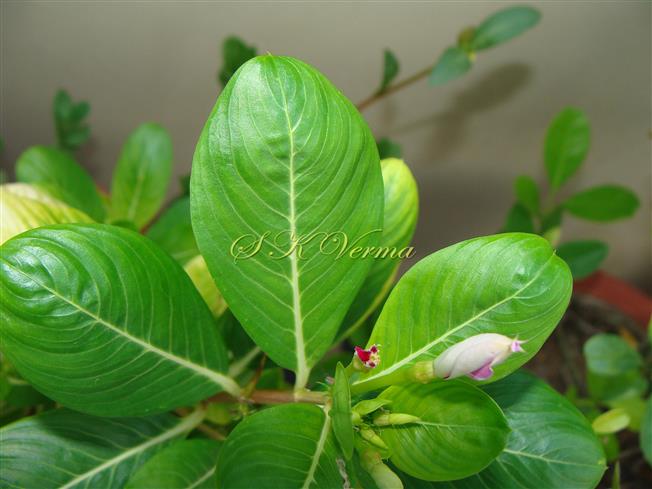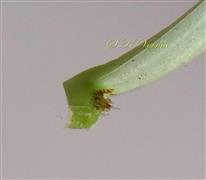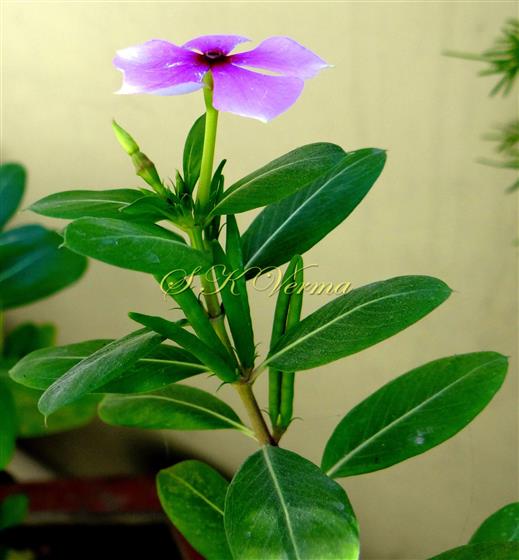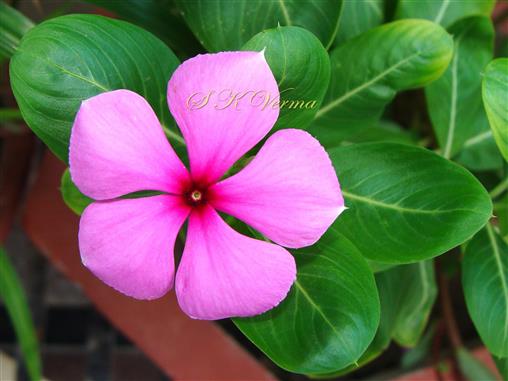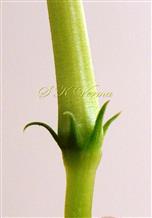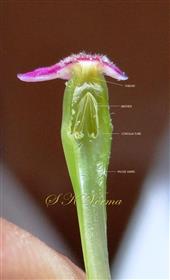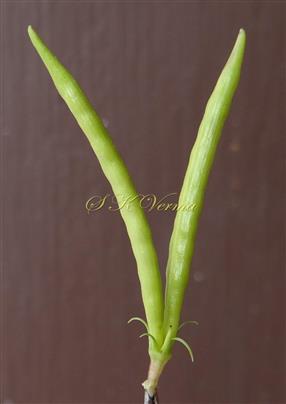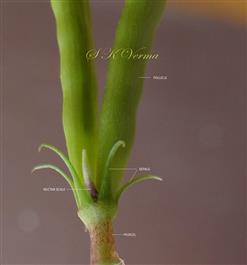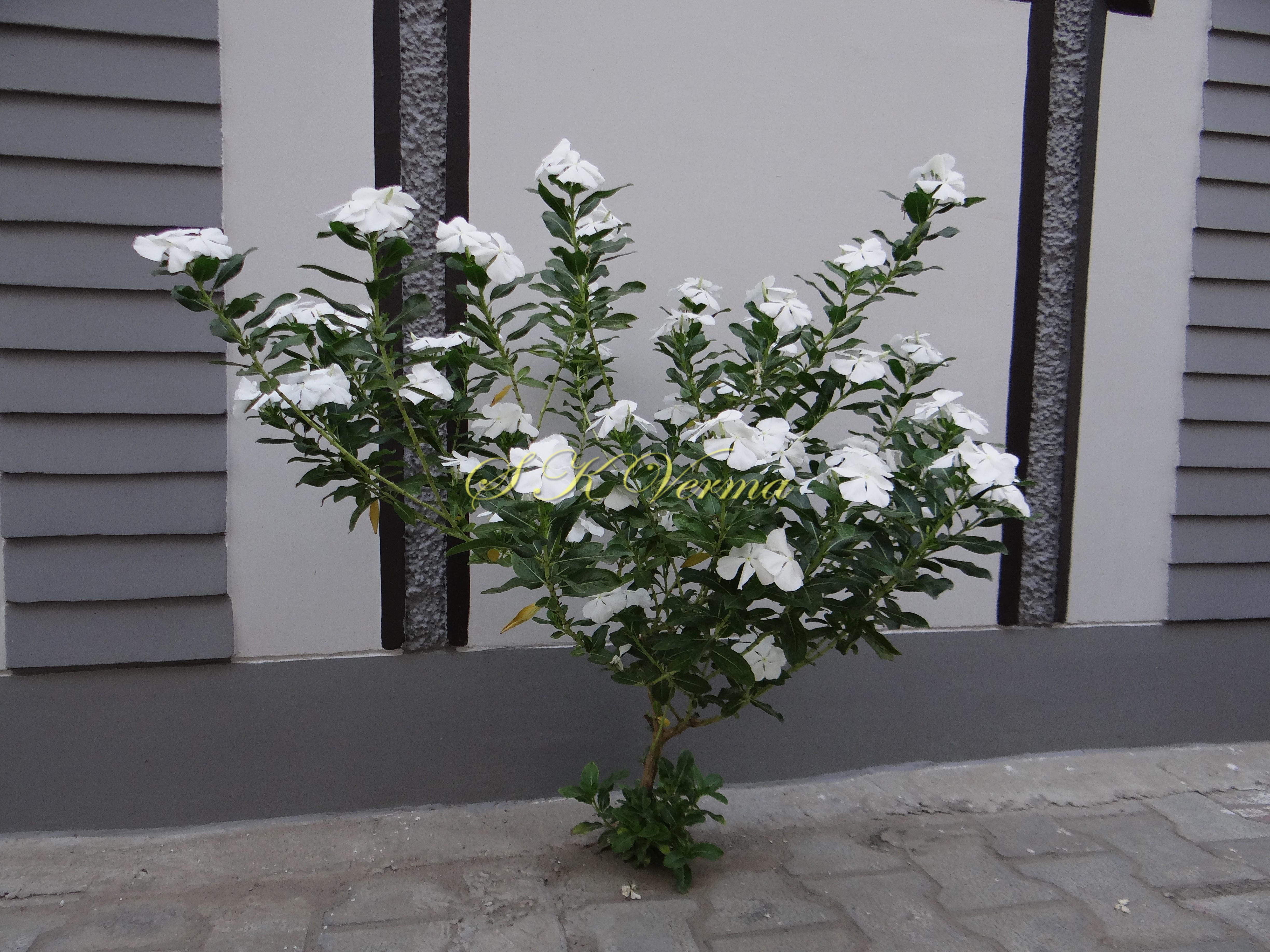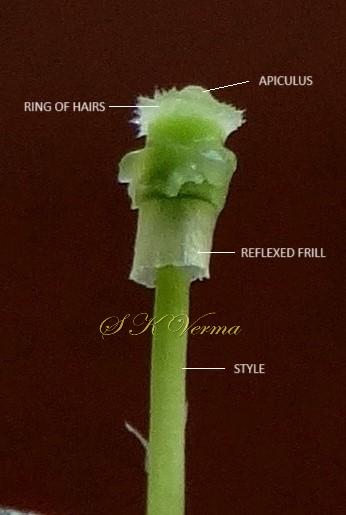CATHARANTHUS
Catharanthus
G. Don., Gen. Hist. 4: 95. 1837; Fl. China @ eFloras.org 16: 156; Nazim. & Qaiser, Fl. Pak. @ eFloras.org p. 18.
Erect, perennial herb or subshrubs, often woody at base, sometimes +/- succulent, juice watery. Leaves opposite, eglandular, exstipulate, petiolate with glands in the axil. Inflorescence axillary cyme, solitary or 2-3 flowers. Flowers actinomorphic, bisexual, 5-merous, hypogynous, white or pink. Calyx 5-lobed, eglandular within, lobes subulate, +/- equal, rarely imbricate. Corolla salverform, tube cylindrical, throat constricted, hairy within, lobes 5, overlapping in bud to the left; lobes spreading, obliquely obovate, apex apiculate. Stamens 5, inserted below the middle in the inflated part of corolla, included, anthers not connivent with stigma, ovate, lanceolate, without enlarged connective. Disc modified into 2 long linear glands alternating with carpels. Carpels 2; ovaries 2, free, superior, ovules many, placentation marginal; style one, filiform; stigma one, capitate, pentagonal. Fruit a follicle, cylindric; seeds numerous, small, rugose, truncate at both ends.
9 species
Catharanthus roseus
Catharanthus roseus
(L.) G. Don, Gen. Hist. 4: 95. 1837; Fl. China @ eFloras.org 16: 157; Nazim. & Qaiser, Fl. Pak. @ eFloras.org p. 18; Pervinca rosea (L.) Gaterao, Descr. Pl. Montauban 52. 1789; P. rosea (L.) Moench, Methodus 463. 1794; Vinca rosea L., System. Nat. Ed. 10 (2): 944; V. rosea var. albiflora Bertol., Novi Comment. SCI. Ins. Bononiensis 4: 411. 1840.
Perennial herbs or subshrubs, woody at base, up to 1 m tall, erect or decumbent. Young stems puberulent or pubescent. Leaves opposite, exstipulate; petiole short, 10-16 mm long, with many glands in axil; leaf blade obovate, oblong or oblong-lanceolate, membranous, 2.5-7 cm x 1-3.5 cm, apex obtuse, mucronate, margin entire, base obtuse or cuneate, glabrous or sparingly hairy specially on veins beneath, shining green above, paler below, lateral veins 7-11 pairs, obscure. Inflorescence of axillary 1-4 flowers in cyme, generally two. Flowers actinomorphic, bisexual, 5-merous, hypogynous, salverform, 3 cm long, ca. 5 cm across, pink or white; pedicel 1-3 mm long. Calyx eglandular within, persistent; tube short; lobes 5, linear, acute or acuminate, 5-7 mm long, hairy. Corolla pink or white, salverform; tube 20-25 mm long, pilose inside, throat villous; lobes 5, 2-2.3 cm long, spreading, broadly obovate or oblong-rounded, with mucronate tip, ca. 1.5 cm broad. Stamens 5, inserted in corolla tube near its apex below throat, included; filaments very short, 0.25 mm long; anthers ovate, ca. 2.7 mm long, connective broad extended into appendage. Two linear nectar scales (modification of disc) situated between and exceeding the ovaries and persisting in fruits. Carpels 2; ovaries 2, pubescent, 2-3 mm long, ovaries unilocular, many ovules in each loculus, placentation marginal; style one, 2-2.5 cm long; pistil head with a cylindrical base, dumbell-shaped and reflexed hyaline frill, apiculus entire (not 2-fid) with subapical ring of hairs. Follicles 2, slender, divergent, cylindric, striated, 15-35 mm long and 2-3 mm broad.
Common Names:Periwinkle, Rosy Periwinkle, Madagascar Periwinkle, Vinca, Happy- Go- Lucky Shrub; Sada Bahar, Sadaphuli, Nayantara (Hindi)
